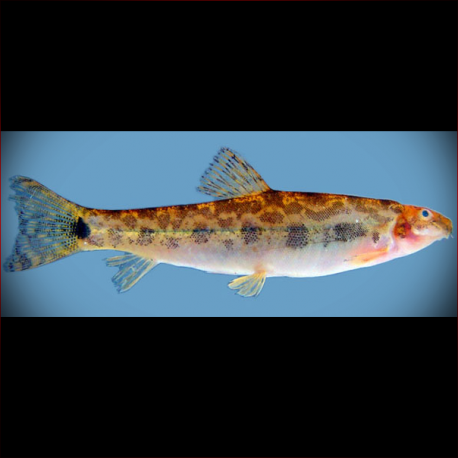More info
Datasheet
| Minimum Tank Size | 60 litres / 15.85 US gallons |
| Maximum Size | 5.5cm / 2.17inches |
| Temperature | 20°C / 68.00°F - 25°C / 77.00°F |
| pH | 6.0-7.5 |
General Description
Lepidocephalichthys Micropogon, also known as Acanthopis micropogon, is a species within the family Cobitidae, characterized by a strongly forked caudal fin, small barbels, and distinctive dark V-shaped bars on its caudal fin. It can reach a maximum size of 5.5 cm. This species is not commonly traded and may appear as bycatch in shipments of other fish species.
Aquarium Setup
For L. micropogon, a soft, sandy substrate is essential as they may spend time buried. Coarse gravel should be avoided to prevent stress or injury. Decorate the tank with water-worn rocks, driftwood, and roots to create hiding spots. Dim lighting is suitable, and leaf litter can be added for a natural aesthetic. High flow rates are not recommended, but some oxygenation is beneficial. Prevent small individuals from entering filter intakes, as these loaches may jump when introduced to a new environment.
Behaviour
Lepidocephalichthys species are peaceful towards tank mates and conspecifics, thriving in groups of four or more individuals. They prefer the company of fish that occupy the upper water column, as their absence can signal danger. Sand-dwelling loaches from specific families may also be suitable tank companions, with caution required for territorial or aggressive species.
Feeding and Diet
Believed to be micropredators, L. micropogon likely sifts substrate for insect larvae and small crustaceans. In captivity, they accept sinking dried foods but should also be offered live or frozen options like Daphnia, Artemia, and bloodworms to ensure a balanced diet.
Reproduction & Dimorphism
Information on the reproduction of L. micropogon is currently unrecorded. Adult males feature enlarged pectoral fins with fused inner rays forming a structure called lamina circularis, distinct in appearance from females who are typically heavier and slightly larger.
Habitat and Distribution
Found in the Salween basin (Myanmar, Thailand), Sittaung and Irrawaddy drainages (Myanmar), and the Brahmaputra system (Bangladesh, India), Lepidocephalichthys likely inhabits slow-moving streams, swamps, and paddy fields with soft substrates and abundant vegetation. These fish can endure varying water conditions, including periods of low oxygen by utilizing their intestine as a supplementary breathing organ.

